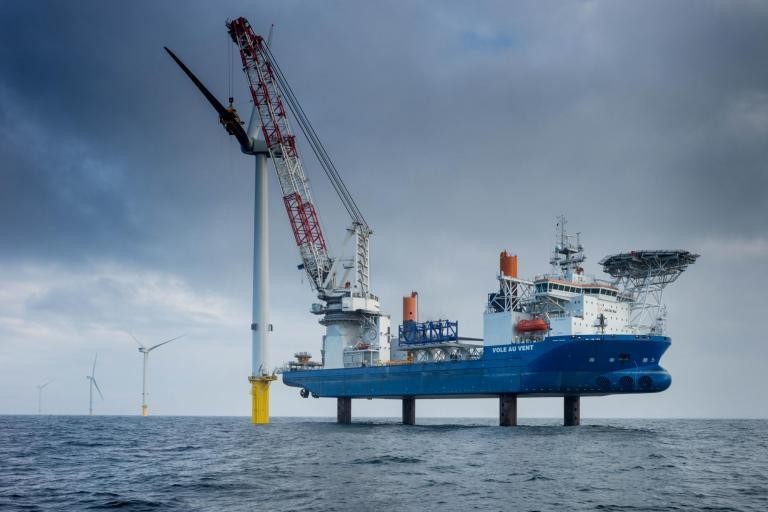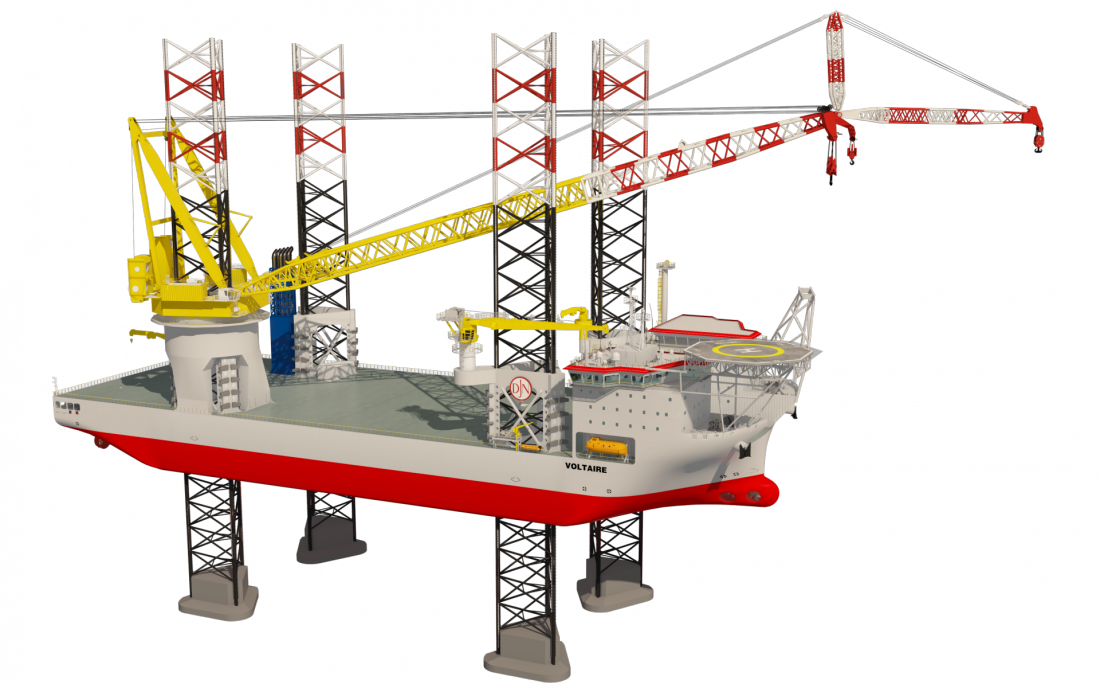VESSELS
Offshore Jack Up Installation Vessels
Ships built primarily for installing offshore wind farms but also perfectly deployable for other offshore activities. This type of vessel is equipped with legs to lift itself above the sea level to ensure stability.
The impressive crane of offshore jack-up installation vessels allows safe installation of heavy foundations and components of offshore wind farms. This type of vessel is equipped with legs to lift itself above the sea level. As a result, it can work in a stable way, without being impacted by the waves.
Cable Installation Vessels
Vessels to transport and install cables. Coupled trenching tools are used for digging in cables and umbilicals.
A cable-laying vessel connects offshore structures and brings offshore energy ashore by installing submarine cables and umbilicals. The vessels are equipped with one or more turning tables allowing to continuously load and install very long cables.
Rock Installation Vessels
Fall pipe vessels install rock on pipelines and other subsea structures. Side stone installation vessels install rock berms and rock protection layers in shallow waters.
A fall pipe vessel installs rock on pipelines and other subsea structures. By using a remotely operated underwater vehicle (ROV) at the end of the fall pipe, we can install rocks in sea depths up to 2,000 m with precision. Thanks to the inclined fall pipe, this ship can also install rocks under permanent structures.
Trailing Suction Hopper Dredgers
A dredging vessel that is mainly used for dredging loose material and soft soils. One or two drag heads suck up a mixture of soil and water and discharge it in the hold of the ship.
A trailing suction hopper dredger dredges loose material and soft soils such as sand, gravel, sludge or clay. One or two suction pipes are lowered on the seabed and the drag head is trailed over the bottom. A pump system sucks up a mixture of soil and water and discharges it in the ‘hopper’ or hold of the ship.
-
Working principles - TSHD - 2019
youtube.com
Cutter Suction Dredgers
Dredger cutting hard soil into fragments with a rotating cutter head. The material is sucked up by dredge pumps and discharged at a deposit area through floating pipelines.
A cutter suction dredger cuts hard soil into fragments with a rotating cutter head. The material is sucked up by dredge pumps and discharged to a deposit area through pipelines across sea and land. In some cases, split hopper barges moored alongside the cutter suction dredger transport the soil to the deposit area to unload it there.
-
Working principles - Cutter Suction Dredger - 2018
youtube.com
Backhoe Dredgers
Pontoon equipped with a hydraulic excavator that excavates the soil and discharges it into a split hopper barge.
This crane pontoon is equipped with a hydraulic excavator. Three spuds stabilise and secure the pontoon. The machine excavates the soil and discharges it into a split hopper barge that is moored alongside the pontoon. The split hopper barge unloads the soil at the deposit area.
-
Working principles - Backhoe Dredger - 2018
youtube.com
Heavy Lift Vessels
Vessels that are able to lift very heavy loads. They are used to recover wrecks or execute various lifting activities especially in the offshore wind, oil and gas sectors.
Crane vessels are able to lift very heavy loads. They are used to recover wrecks or execute various lifting activities at sea or in ports, such as lifting offshore modules, installing foundations for wind turbines at sea, assembling bridges... Some of our crane vessels are self-propelled or equipped with a DP system.
Trenchers
Trenching tools dig in cables after their installation. Our fleet includes trenchers for every water depth.
Trenchers dig in cables after their installation. Our fleet includes trenchers for every water depth. The remotely operated underwater vehicles (ROVs) are controlled on board of vessels and can work up to sea depths of 2000 m. Furthermore, Jan De Nul Group has at its disposal in-house designed amphibious tools that can dig in cables in foreshores.


















